This week on the podcast we’re discussing the importance of alone time for kids, so we thought we’d revisit the blog post below, filled with great ideas for beginning a quiet time routine with preschoolers. Enjoy!
Life is busy these days— we’re juggling full schedules with kids activities, chores, work, school, errands, appointments, birthday parties and playdates. But there’s something glorious that happens every day in the early afternoon for about two hours when the hustle and bustle dies down; I work on writing in my room with a cup of tea while my daughter, immersed in her imagination, works on a self-directed craft project building her stuffed owl a swing from construction paper: this is the magic of quiet time.
I introduced quiet time as soon as my daughter dropped her daily nap and even though it took work to implement and still takes intentionality to maintain, having routine alone time has really helped all of us thrive; there is no doubt that I am a happier, more calm and patient mom when I’ve had time to myself— whether that’s to rest, read, paint, work, or get things done around the house (quietly)— and the same goes for my children. We are all a better version of ourselves when we set aside time to hit pause on all the stimulation and demands of the day, and simply recharge.
Quiet time or rest time for some kids may mean quiet reading time or independent play time, while for others it could be zoning out to music or an audio book; basically, your little one is in charge of their own fun (or boredom) with some set parameters. Even when children no longer physically need a daily nap, they still need downtime and there are so many valuable skills that kids learn through unstructured, independent play— making decisions about how to spend their time, exercising autonomy and creativity, problem-solving, and growing in confidence that they can accomplish things on their own.

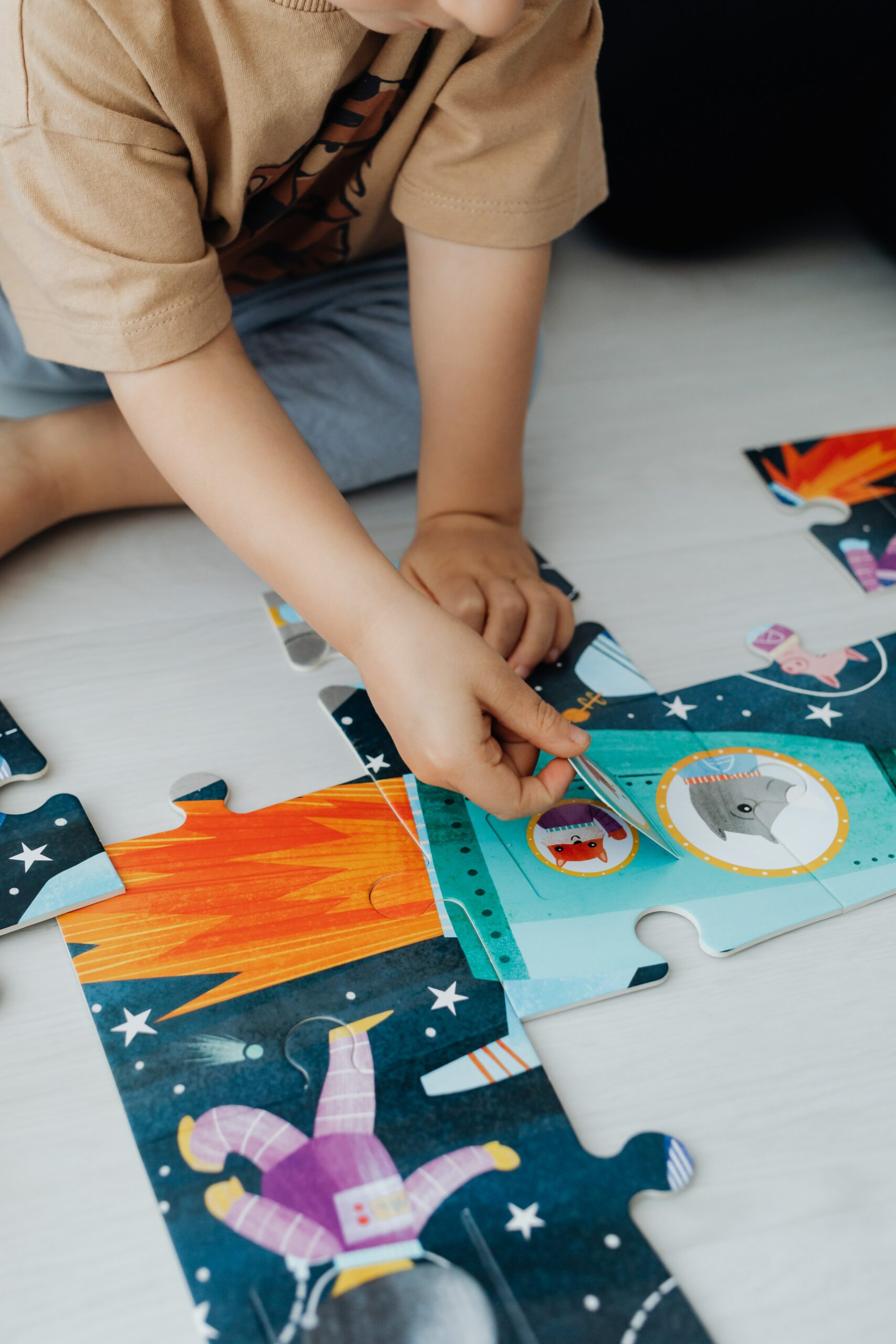
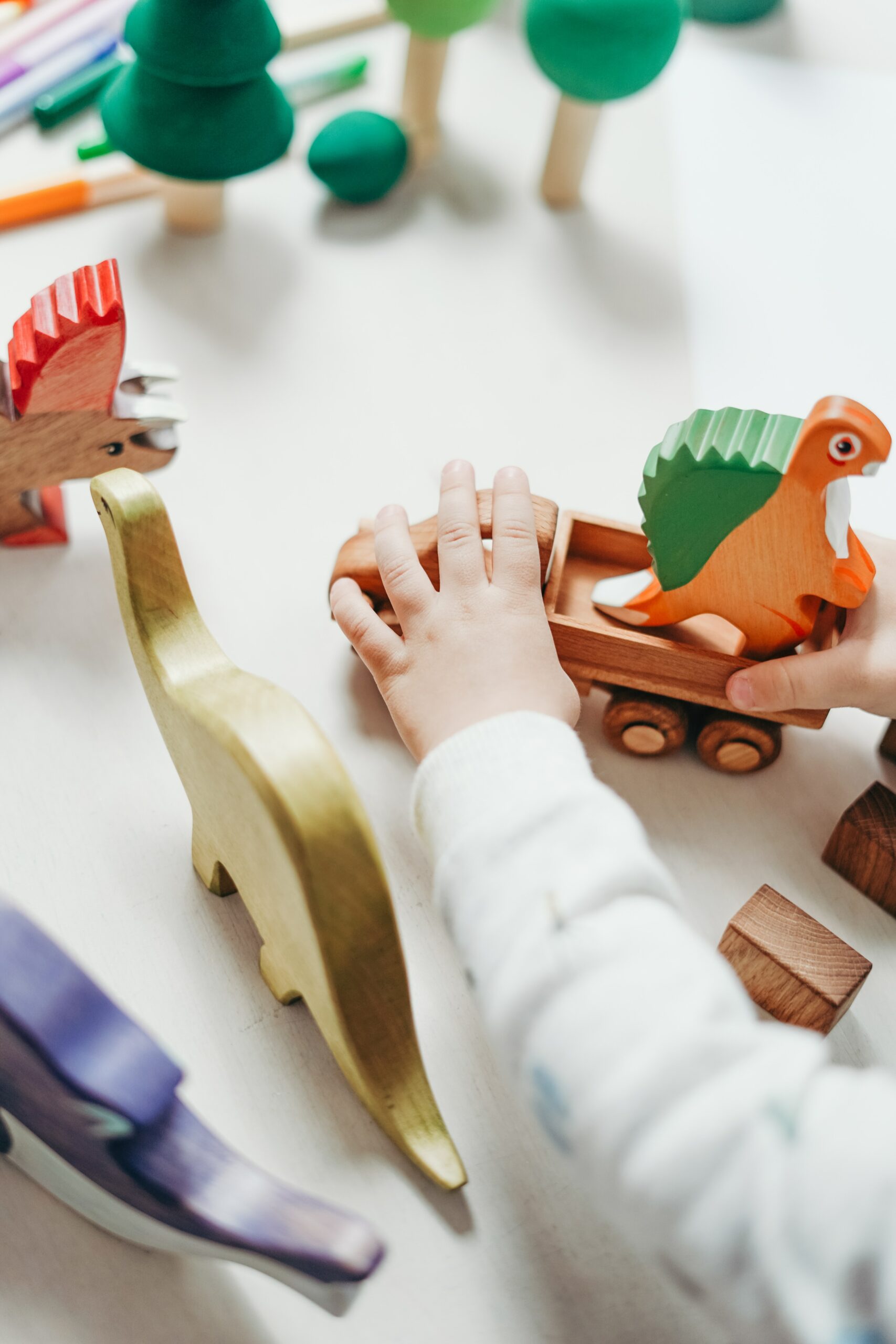
I could sing the praises of quiet time all day long, but I also know that it can be tricky to transition a toddler or preschooler from nap time to quiet time. A child’s ability to entertain themselves and be comfortable with alone time develops with practice, so establishing a new quiet time routine does take some work and patience.
Here are our essential tips for creating a successful quiet time routine:
Spend a little one-on-one time before starting quiet time
Sometimes you’ve got to put time in to get time out. I’ve found that spending at least 10 minutes of intentional one-on-one time with my daughter right before rest time really helps to fill her bucket for independent play later on. We stick to activities that are calming and have a clear end point like reading a book, coloring, or doing a small puzzle together. It makes such a big difference when your child goes into quiet time feeling connected and secure rather than yearning for attention!
Start small and work your way up
My four-year-old has about 2 hours of quiet time each day that lines up with the baby’s afternoon nap. It’s glorious but we definitely had to work up to this. Start with a shorter amount of time that is attainable for your child then gradually work your way up as their independence grows. Consider your little one’s age and ability to entertain themselves during the day— a child that plays well on their own might begin with 30 minutes of quiet time while the starting point for a toddler might be as little as 10 minutes.
Initially, it might also help to break up quiet time into smaller chunks by offering a new activity at the halfway point; for example, a 30 minute quiet time might look like 15 minutes of reading followed by a check-in to let them know they are doing great and offering a bin of blocks to build for another 15 minutes. Try to keep the interaction short, praise the progress your child has already made, and slowly increase the interval between check-ins.
Use a visual timer
An ok-to-wake clock has been a game changer for us in establishing our bedtime and rest routines. Little kids struggle with the concept of time and not knowing when quiet time will end can make them feel anxious. An alarm clock that lights up in different colors to cue when quiet time begins and ends helps put to rest the inevitable question, When is quiet time done?
Using a visual timer or alarm clock also relieves you from being the sole enforcer of how long the quiet time will last (it’s the clock that says when it’s ok to come out!) and avoid power struggles. For kids who like knowing how much time is left, a timer like this one that shows a visual countdown can provide that extra reassurance that time is progressing.
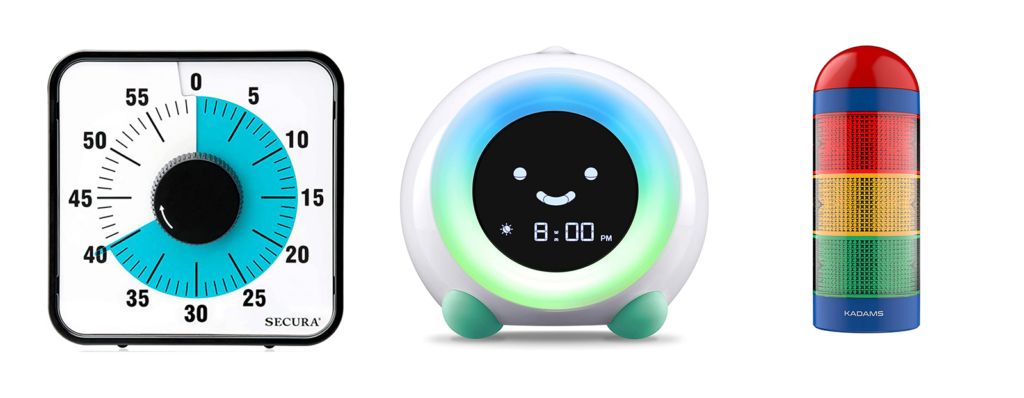
Let them know what to expect and be consistent
When you start transitioning your toddler or preschooler from nap time to quiet time, set some ground rules so they know what to expect. Keep it simple— let them know where they will spend quiet time and give a few specific do’s and don’ts. The 3 basic rules for quiet time in our family are:
- Stay in your room until the ok-to-wake clock is green (except to go to the bathroom or if there is an emergency)
- Choose something quiet to do on your own (when she was younger I would provide a few options)
- No jumping, stomping, or yelling (this became a rule for us after a certain quiet time when my daughter decided to pretend the rug in her room was a pool and she was jumping off her bed onto it yelling, “THREE TWO ONE SPLASH!!!” at the top of her lungs)
I’ve also found it helpful to model quiet time behavior for my daughter by letting her know how I will be spending my alone time: “Mommy will be having quiet time too. I will be resting in my room” or “Mommy will be spending quiet work time in front of the computer.”
Of course kids will test these boundaries, but having a rhythm of rest is a priority in our family so we are firm on our rules and consistent about enforcing them. We do quiet time at around the same time everyday, including weekends, even when we are traveling with very few exceptions; now my kids know it’s just a natural part of our daily routine.
Set up a video monitor
When things seem a little too quiet it can either mean rest time is actually going great or…trouble. My daughter has quiet time in her room with the door closed so having a way to supervise her safety without my physical presence has been key to our quiet time success.
A video monitor is a great way to make sure your little one isn’t getting into something dangerous without interrupting their focus on solo play. It’s also been particularly useful in helping us expand the range of activities my daughter has access to as she’s gotten older; for example, when my daughter wanted to start using markers, scissors, and glue in her room during quiet time, I was pretty nervous about the possible havoc that could lead to…but the video monitor gave me peace of mind knowing that I could step in at any time if she started applying her creativity to the furniture or her clothes, so we gave it a try. Now, arts and crafts are one of her favorite things to do during quiet time and we love being surprised by all the amazing things she creates!
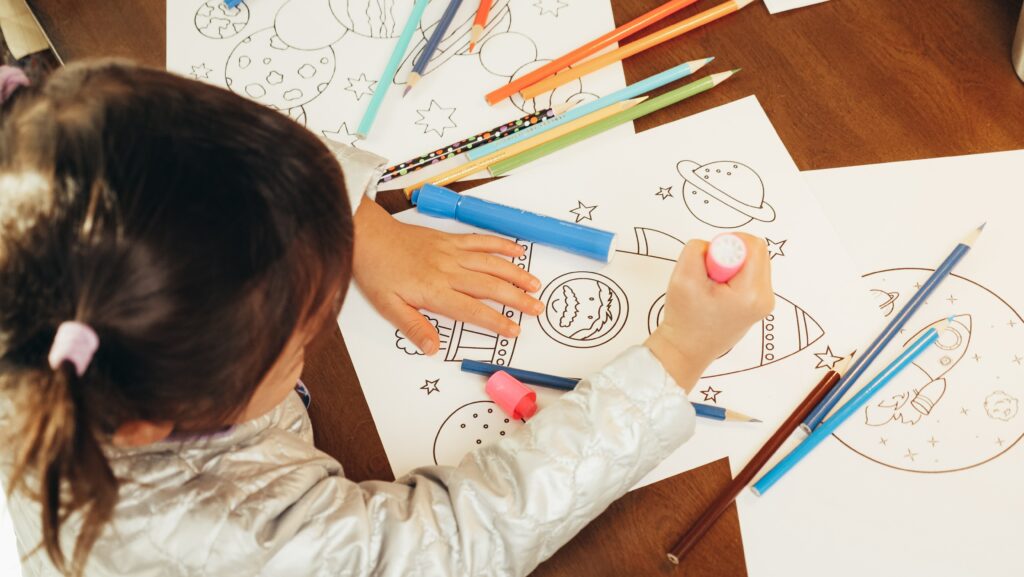
Provide incentives for a successful quiet time
Having something to look forward to can provide that extra bit of motivation your child may need to exercise patience and entertain themselves during quiet time. We use screen time as an incentive for following quiet time rules and it’s worked out great so far. You could also offer a special snack, treat, or fun activity like going to the park to encourage good quiet time behavior.
As with any reward system, an incentive works best when you have clear and consistent rules for what “good” quiet time behavior looks like and you must be prepared to follow-through and enforce those boundaries.
Calm music or audio books
A playlist of soft music or an audio book can be a great tool to help your child to pass the time and relax. Setting up an audiobook or music to play for the same duration as quiet time can also give your child an audio cue for how long quiet time will last. The Toniebox is especially great for this!
Special toys and activities reserved for quiet time
When you first begin building a rest time routine, a few new toys and activities can really help get your kids excited about quiet time and keep them occupied for longer. I often wait until quiet time to present my daughter with new books.
At first, you might start with simply designating that it’s “reading time” or “building time” to help ease your child into the role of being in charge of their own play. As their autonomy grows and they get into the habit of entertaining themselves, go with your child’s interests, offer more choices, and create a rotation of quiet time activities to keep things fresh.
Here are some of our favorite open-ended quiet time toys and activities:
- Building toys like PicassoTiles, Duplos, Legos, or train tracks
- If your child can be trusted with art and craft supplies, I absolutely LOVE the creativity that quiet time brings out! Crayons, a coloring book, and some stickers are a great start. For younger kids, Color Wonder books, Water Wow books, and a magnetic drawing board are great mess-free options.
- Reusable sticker pads and puffy sticker activity books from Melissa & Doug
- Doll houses, action figures, and animal figurines
- Beads to string together (pony beads with pipe cleaners are an easy one to start with for preschoolers) or larger lacing beads for younger children.
- Puzzles like this one or this big floor puzzle. There are also lots of great, cheap options at dollar stores.
- Interactive books. We love The Ultimate Book series that cover a variety of topics like the earth space, city, and airports— they are so well made with lots of moving and 3D components, beautifully detailed illustrations (the reading level is for older grade school children but the pictures are great even for preschoolers), and are just so engaging and fun! These finger maze books are also great for toddlers and younger kids.
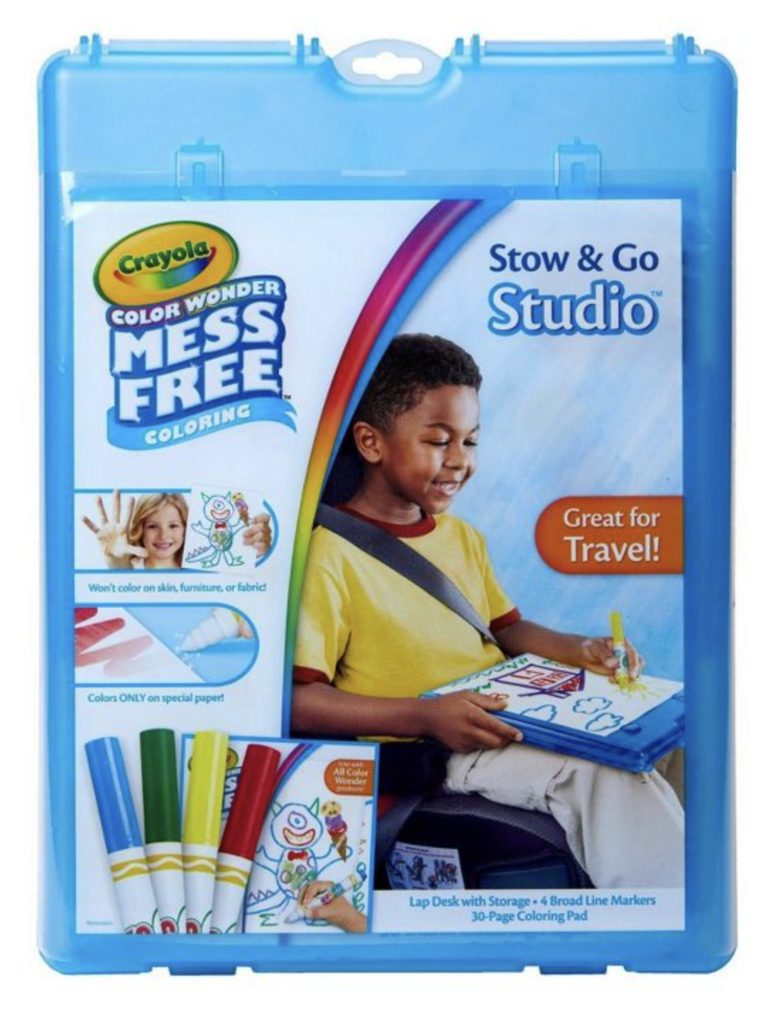
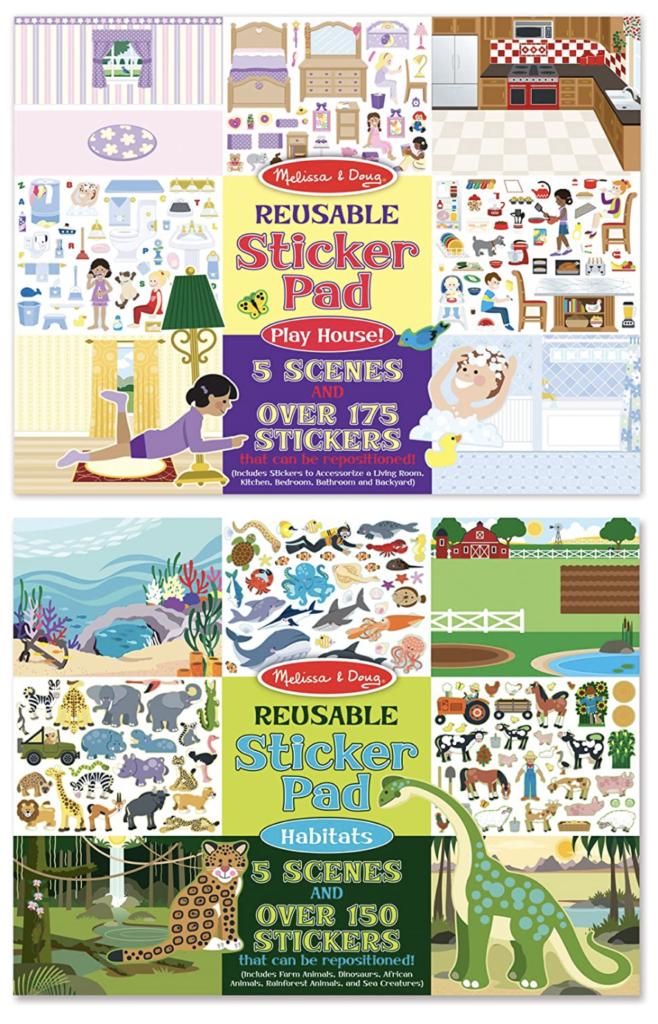

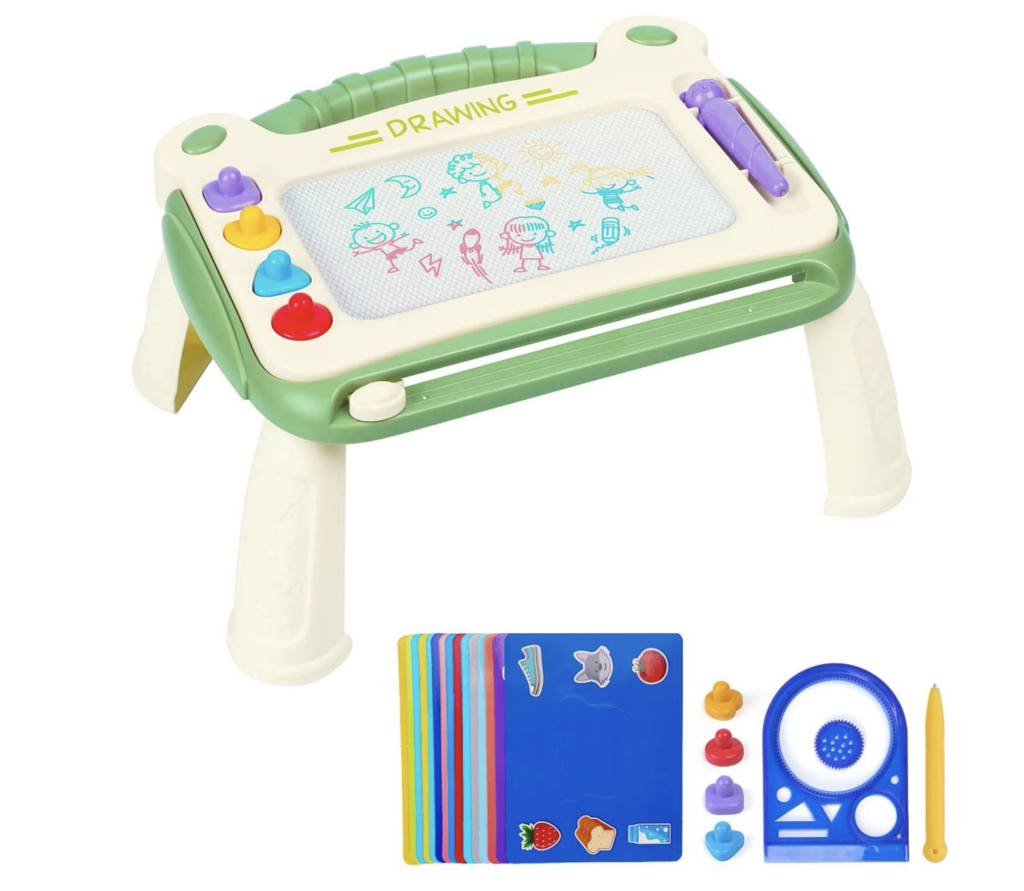
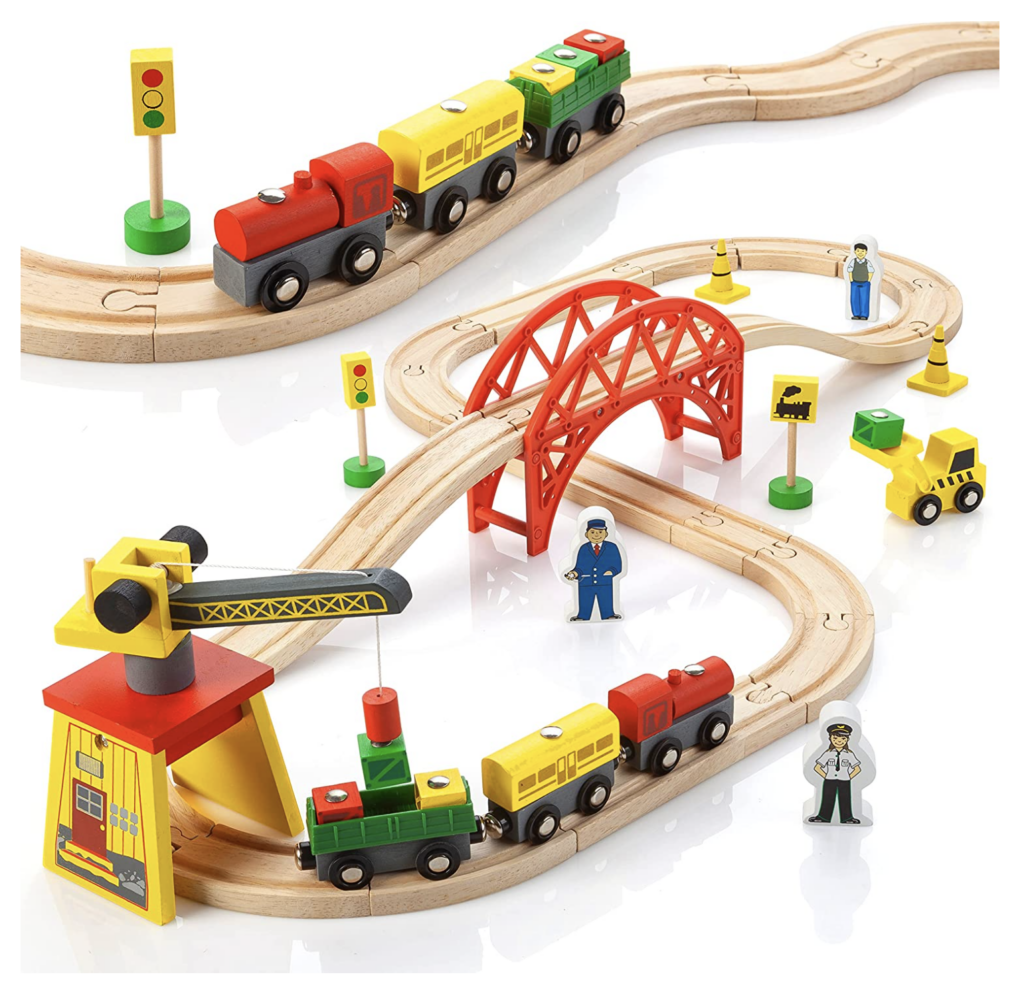
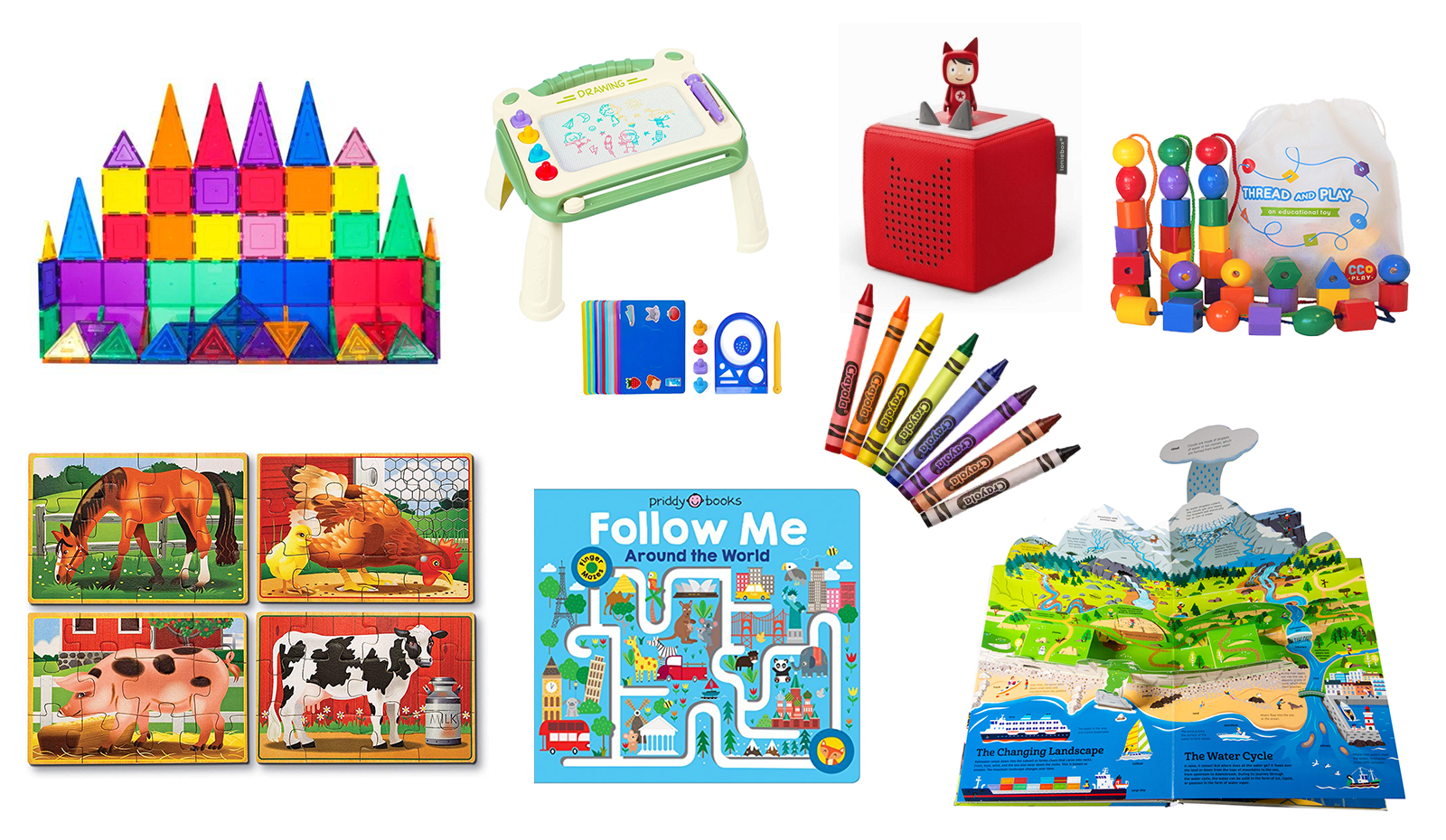


Leave a Reply